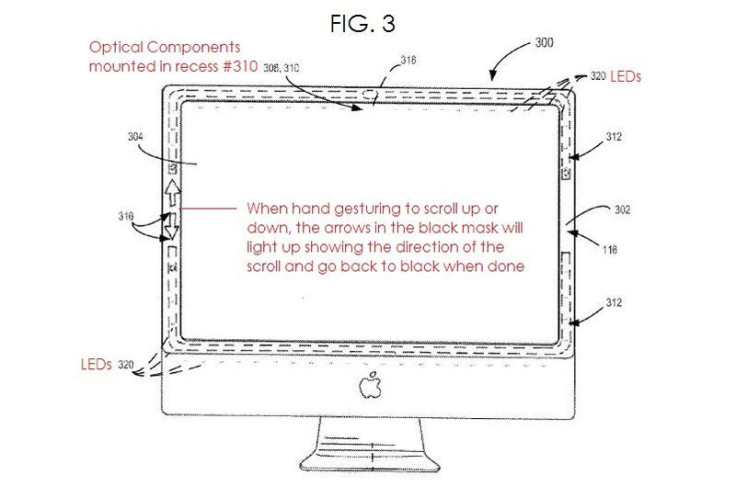Apple Mac And Macbook Rumors: Patent Reveals Plans For Touchless Gesture Controls
The U.S. Patent and Trademark Office published a patent belonging to Apple Inc. (NASDAQ: AAPL) on Thursday that hinted at some of Apple’s potential plans for future Macs and Macbooks.
The patent revealed a method for hiding new sensors -- such as infrared sensors, ambient light sensors, indicator lights and cameras -- in the body of the Mac that would allow users to control the computer with in-air hand gesturing. The patent is a way for Apple to place these components on Macs that will be effective without interrupting Apple's seamless design aesthetic.

The traditional problem with concealing sensors is that it can interrupt the passage of light necessary for the sensor to function properly. Apple’s invention uses a two-component masking assembly to prevent the reflection of external light to at least partially conceal the sensors and cameras.
One part polarizes lights passing through it to the sensor. The second piece, a waveplate mounted between the polarizer and the sensor, shifts the axis of any reflected polarized light. This essentially allows light to pass to the sensors but prevents light from being reflected back out toward the eye, effectively masking the sensors.
Apple’s patent indicated plans to use this technology to hide a hidden display with the primary display of Macs and Macbooks that would connect to a proximity sensor. The proximity sensor would alert the hidden display to the presence of an object, such as a hand, creating the possibility of touch-less control. This is supported by the patent that also shows hidden indicator lights in the display that react to scrolling.
It would be like having the abilities of a Microsoft Kinect without any additional objects taking up space and sacrificing the design of the Mac -- one of Apple’s biggest selling points. The additional sensors could also improve lighting for FaceTime conferences.
Patently Apple speculated that the patent could apply to other future Apple devices, such as the oft-rumored Apple TV, and future generations of the iPhone and iPad.
Its important to remember that Apple frequently files for patents on technologies and innovations that are never actually used in a product. Another recent patent filed by Apple explored the possibility of adding touch capabilities to Macbook screens. It's unlikely Apple will make its computers both hands-free and touchable.
© Copyright IBTimes 2024. All rights reserved.












